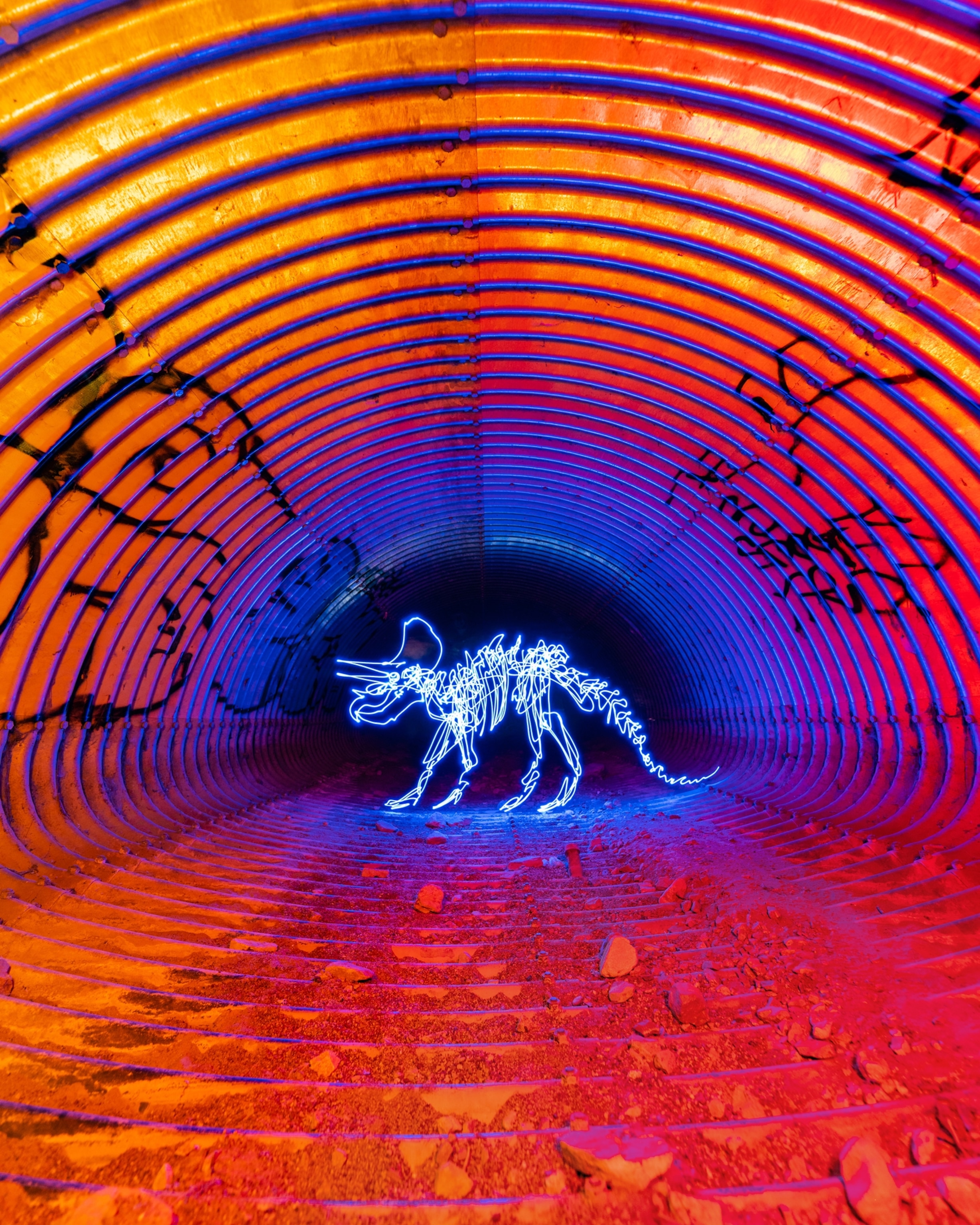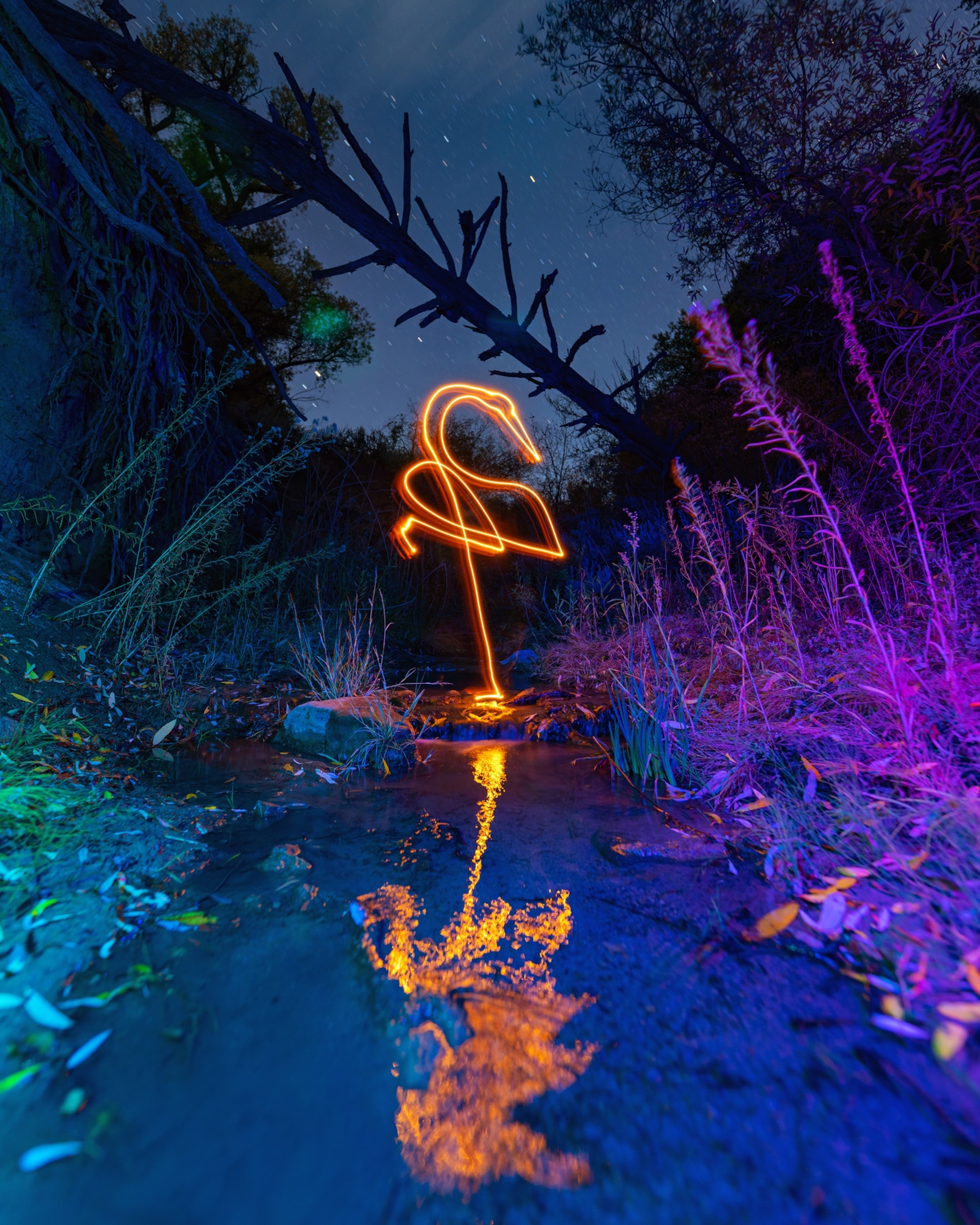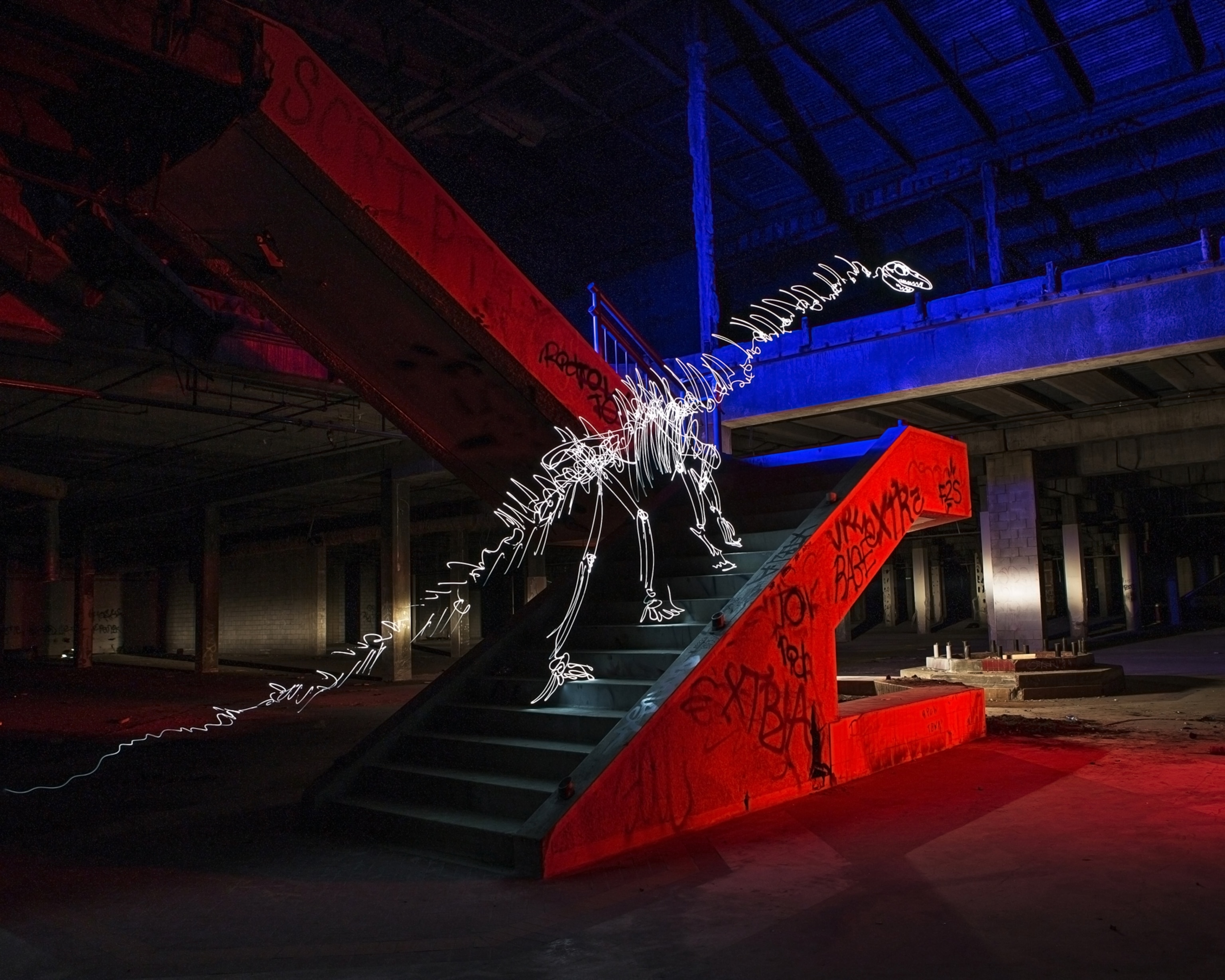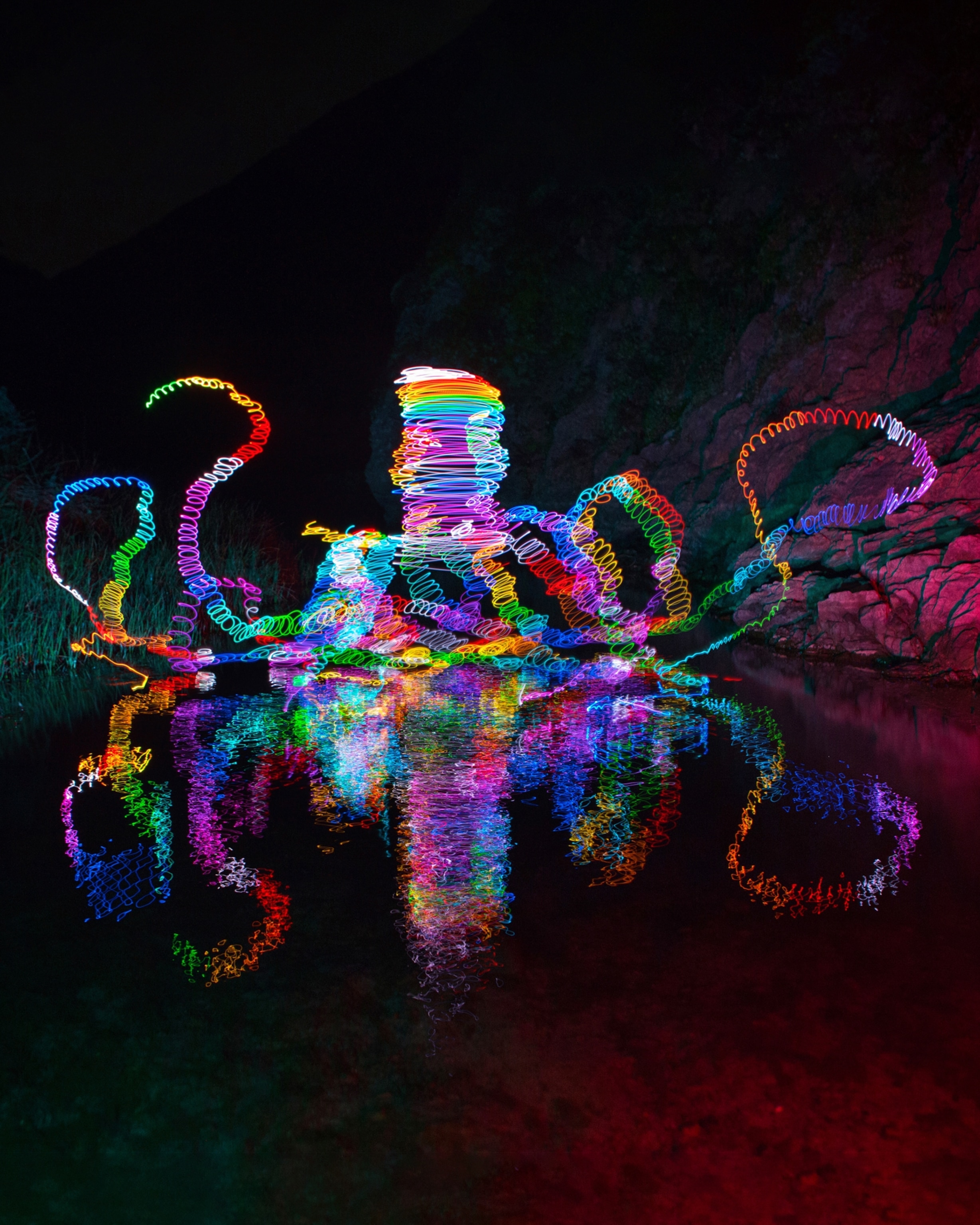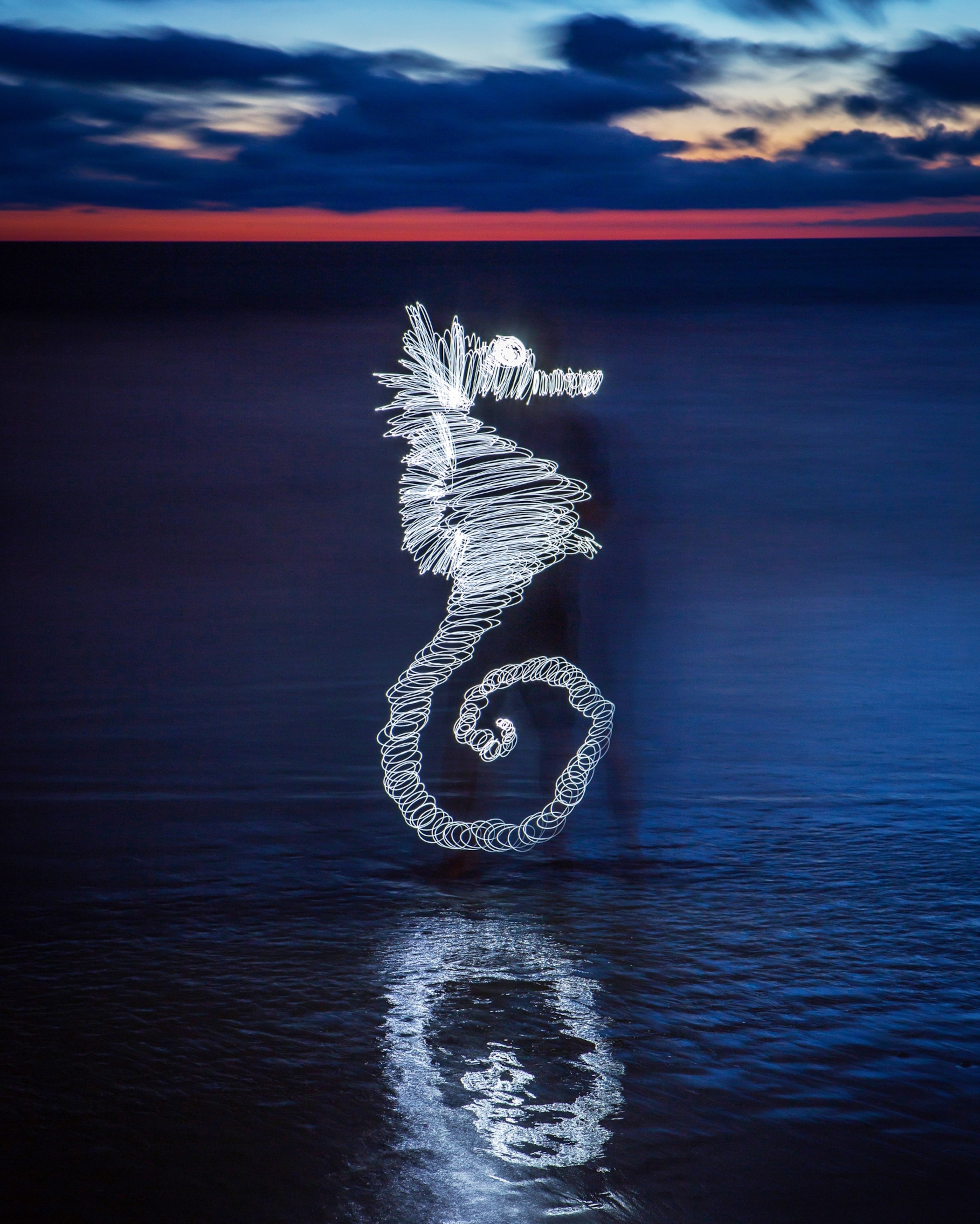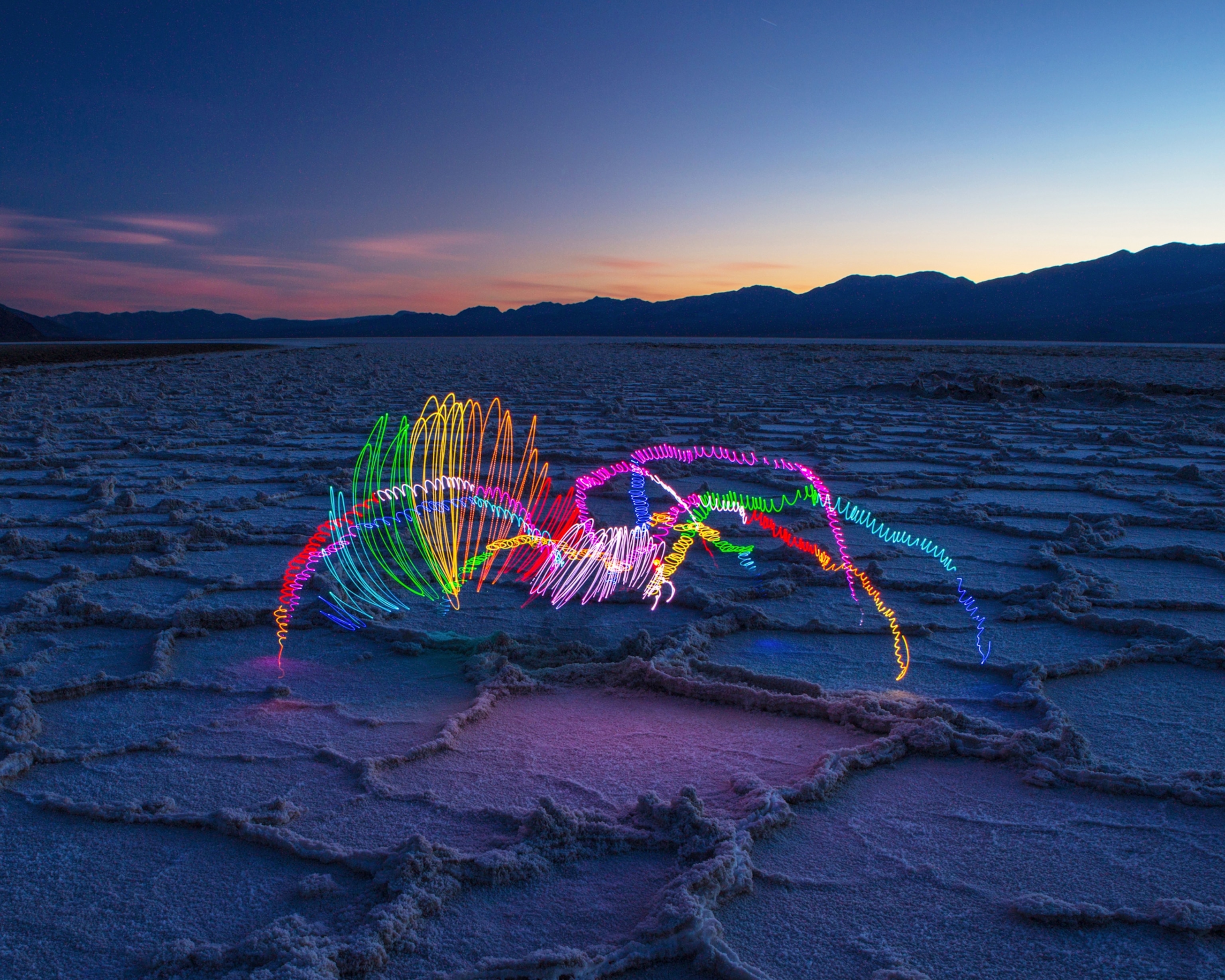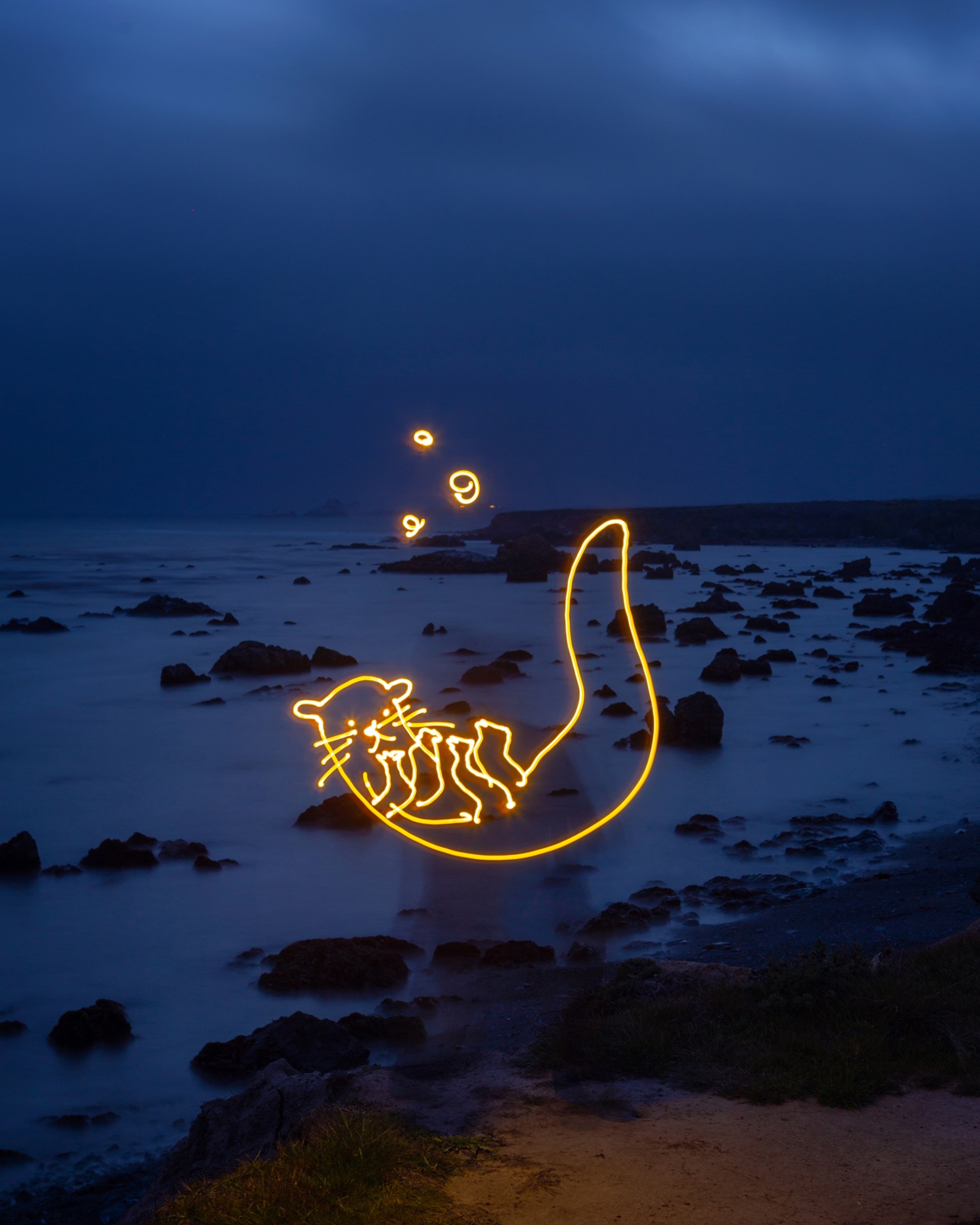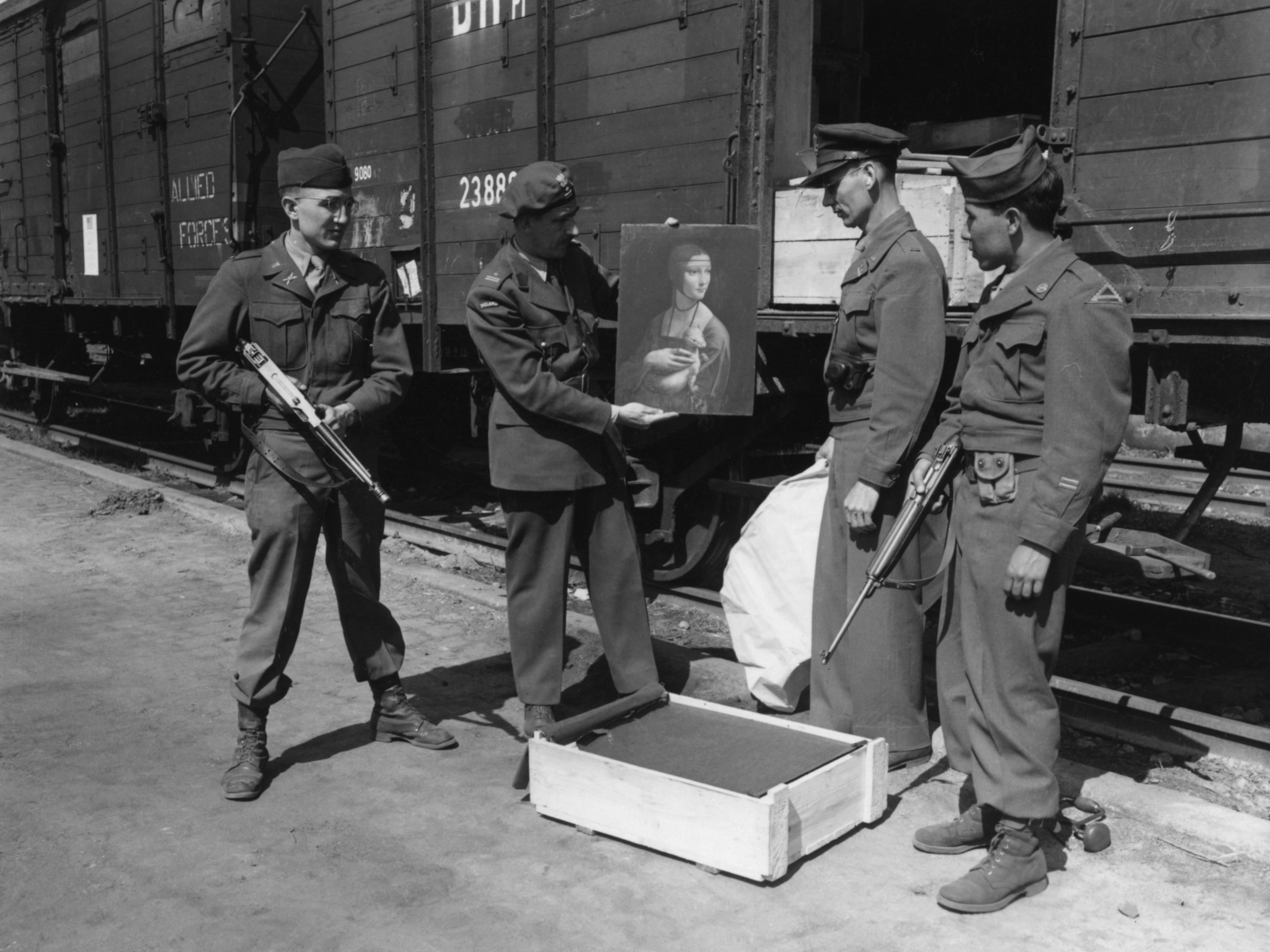A chance encounter with a coffee-table book set graphic designer Darren Pearson on a new artistic path. He was charmed by one element in particular: a 1949 black-and-white photograph of Pablo Picasso at work. But instead of a brush, Picasso is using a light to “paint” his creation in midair. “I was captivated,” says Pearson. “I was like, How is this possible?”
Photographer Gjon Mili was able to capture Picasso creating objects with light by setting his camera to a slow shutter speed. Pearson, founder of the light-painting company Dariustwin, now uses that same long-exposure technique—but he doubles down on the artistry, taking the photos and painting the subjects. And he works only at night.

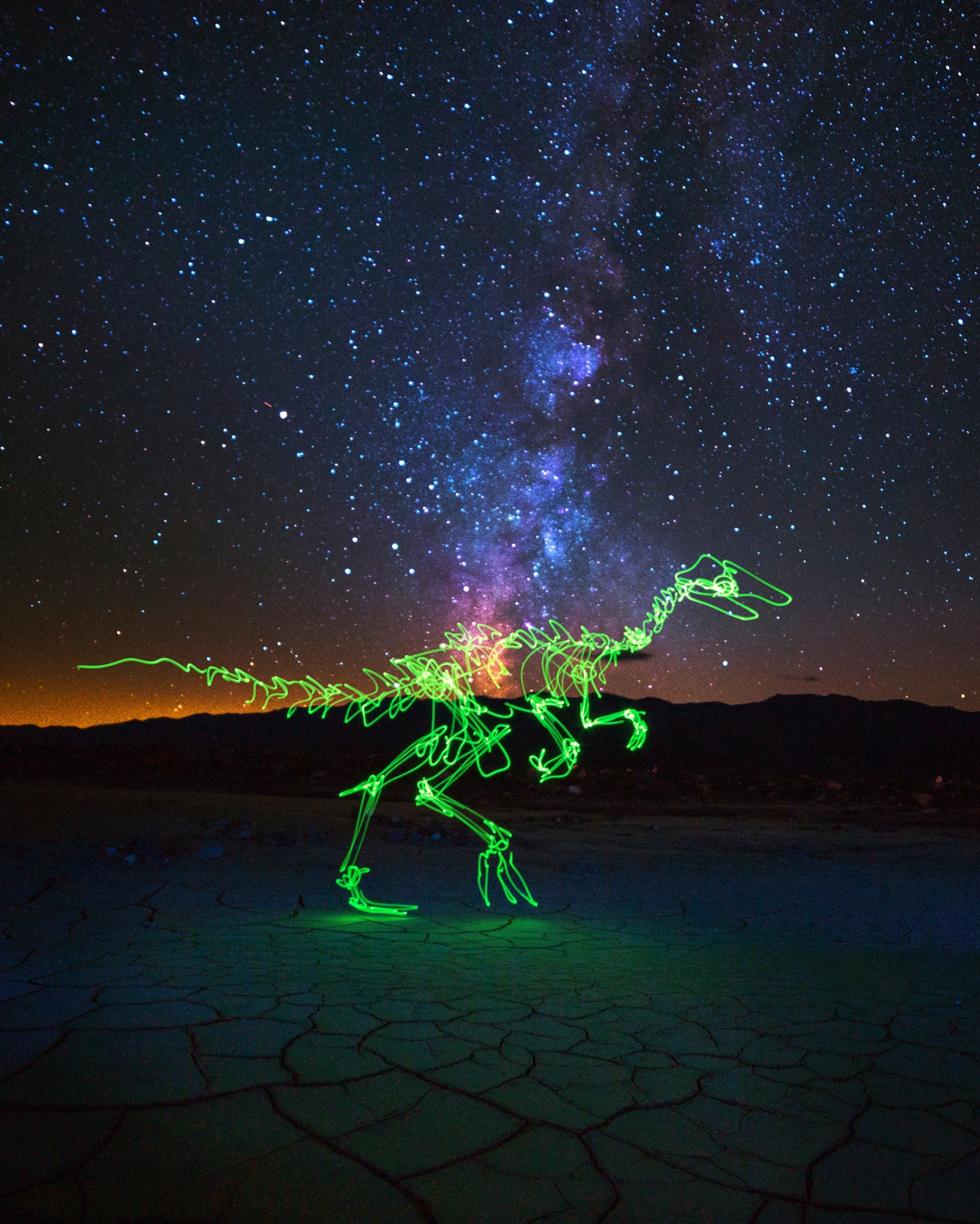
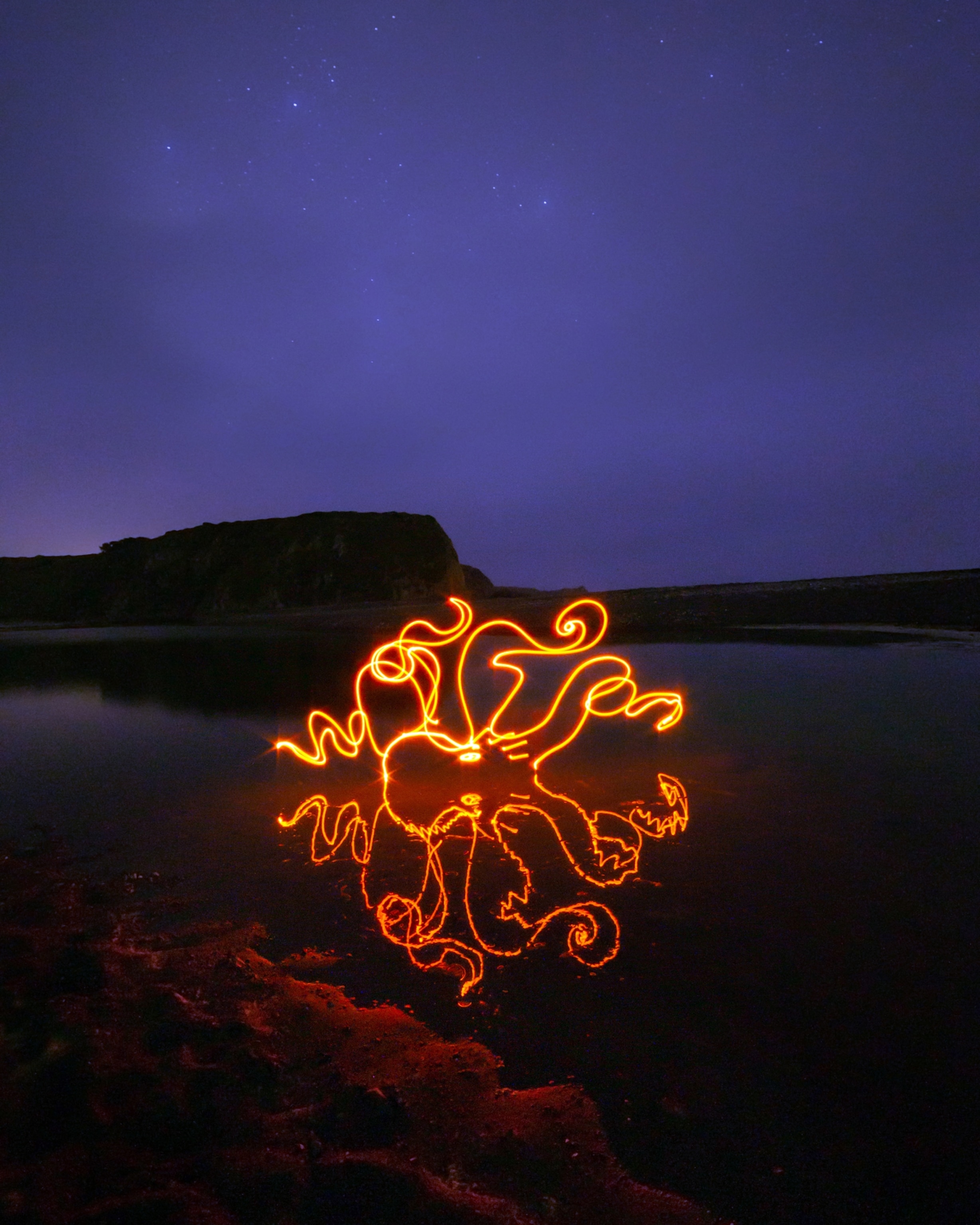
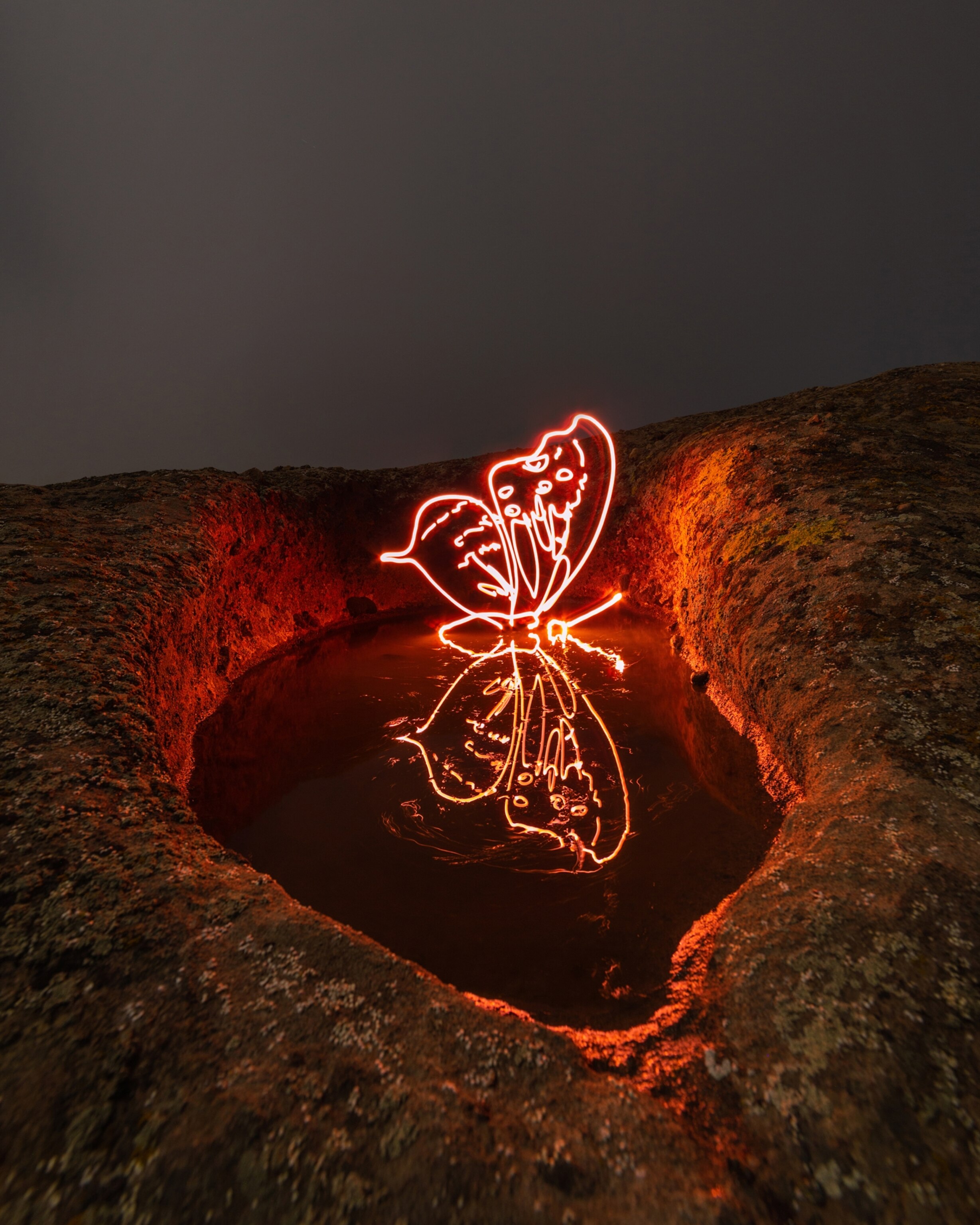
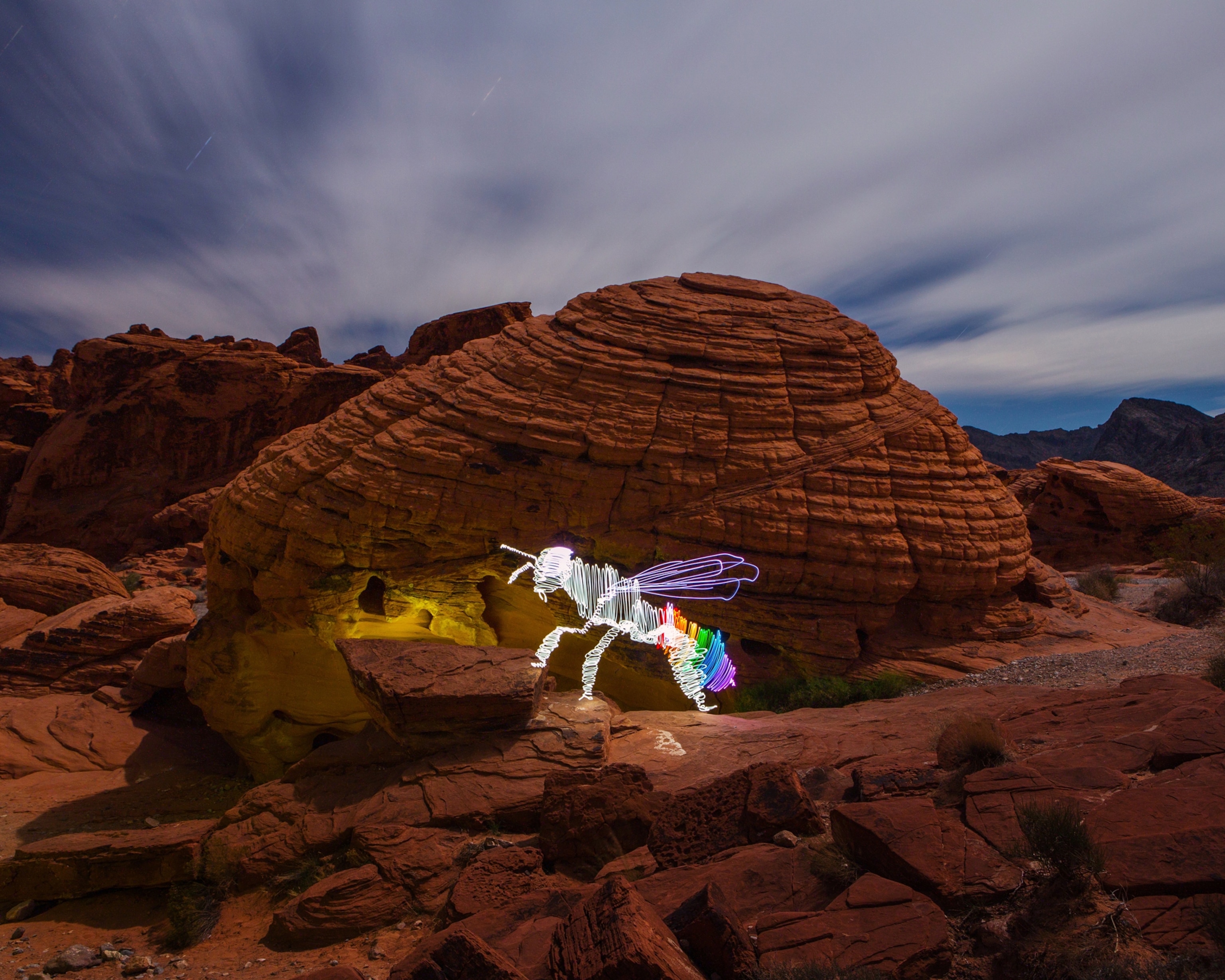
Pearson begins by placing his camera on a tripod, aimed at the desired backdrop. Then, wearing black to disappear into the darkness, he steps in front of the lens and starts painting. His tool, which he designed and calls the Night-Writer, resembles a marker with interchangeable colored tips. To the casual observer, he might look like someone frantically searching with a flashlight for lost keys, he says. But he’s actually sketching a life-size image of a subject from his mind’s eye.
Several muses are evident in Pearson’s work. Dinosaurs make frequent appearances: “That’s the five-year-old me who wanted to be a paleontologist,” he says. Rugged landscapes also recur, especially those of California, where Pearson lives in a cabin in the woods with his wife, Jordan, and their young son, Jasper.
Pearson is also fascinated by time, not only the hundreds of millions of years represented by rock formations but also the brief spell of a 30-second shutter speed. Subtle shifts occur even within those short periods, he says. “The stars move, the moon creates shadows. You have a natural evolution of time.”
